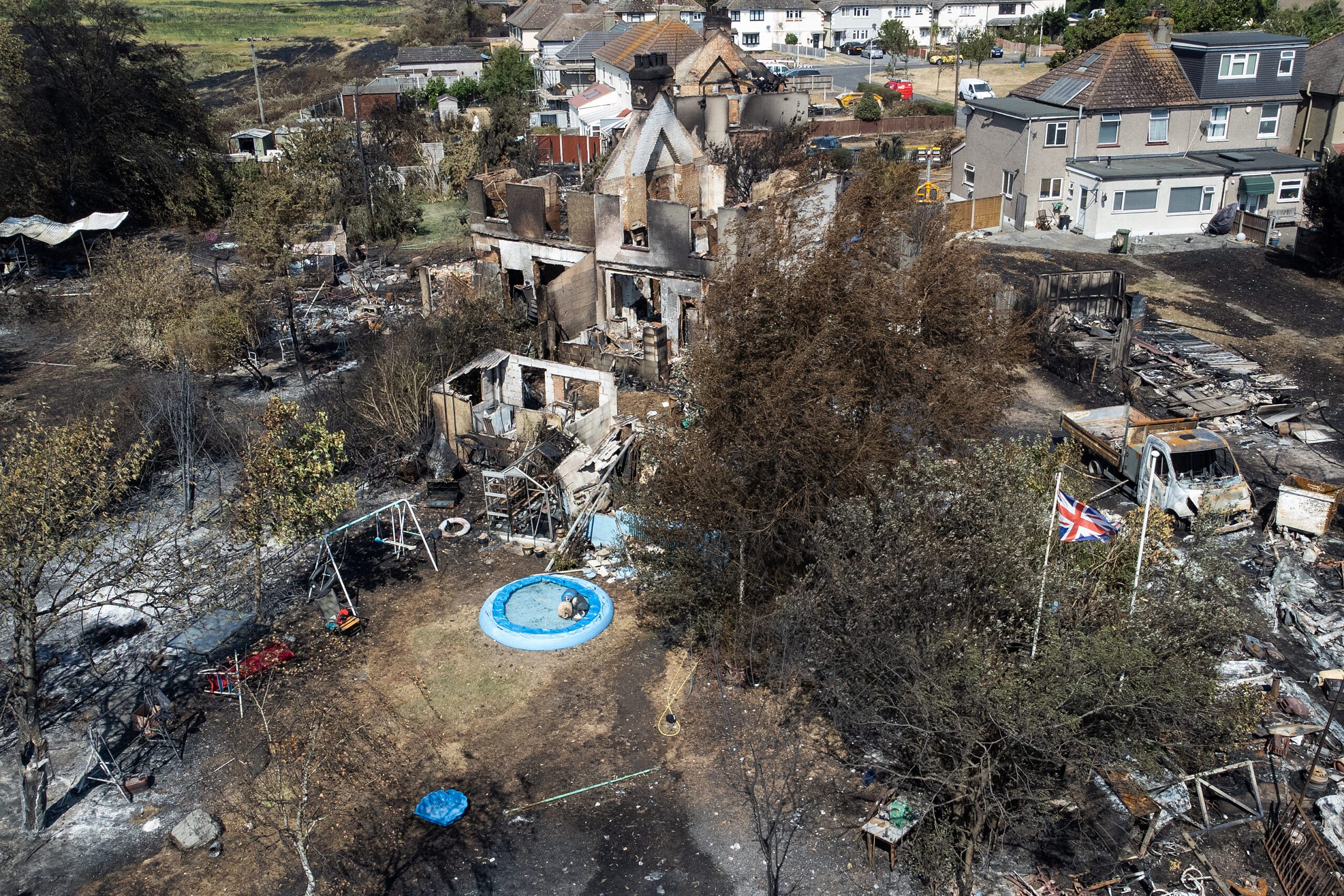On a Friday afternoon in late July 2022, José Antonio Gonzalez stepped into a searingly hot Madrid afternoon to start his job as a street cleaner. He’d swapped this shift with a colleague, perhaps in the hope of getting his one-month summer contract extended.
A few hours later, as temperatures pushed into the mid thirties, he collapsed on the street he’d been cleaning, suffering from severe heat stroke. By the next day, he was dead – one of nearly 2000 casualties from the heatwave gripping Spain and Portugal.
In sun-starved Britain, hot days have usually been a thing to look forward to. Because temperatures rarely hit dangerous levels in the past, most people have never had to learn to recognise – and deal with – extreme heat.
But with climate change pushing UK temperatures past 40C for the first time ever, we need to learn the difference between a welcome sunny day, and a dangerous heatwave.
Extreme heat is dangerous to humans in lots of ways – some obvious, and some more surprising. There are four important things to know.
1. In extreme heat, healthy people can get sick, and sick people can die.
The human body has lots of different systems that keep us alive, and they only work properly within a narrow temperature range. If someone’s core temperature rises by even one degree, many of these systems start to struggle. So the body will work to cool itself down by sweating, and pumping more blood to the surface of the skin.
Normally this system works pretty well. But extreme heat can be too much for the system to cope with, and that’s when the core temperature rises into the danger zone.
At this point, blood vessels expand, which lowers blood pressure, giving the brain and other vital organs less access to the oxygen and sugar they need. This can lead to confusion, fainting, and seizures. In severe cases, the heart can even stop beating altogether, or blood clots can form, triggering a stroke.
Although extreme heat is dangerous for everyone, some are more at risk than others. Most heat-related deaths happen in people whose hearts and other organs have been weakened by illness or old age. Of the 1634 heat-related deaths recorded in 2021, nearly 90% were in people over 65. And as we’ll see later, people who are already ignored or exploited by society bear a much bigger share of the risk.
As well as the direct health risks, extreme heat also seems to come with more dangerous behaviour. Some of these changes are easy to understand: people get into accidents while trying to cool off, jumping into rivers or swimming in dangerous ocean currents. But others are less obvious.
Suicides happen more often in hot weather, and rates of domestic violence and other violent crime also rise. Even riots are more likely in higher temperatures. Researchers don’t know if these changes are directly caused by extreme heat, but they do seem to go hand-in-hand.
2. Extreme heat breaks things we rely on
One of the cruelties of extreme heat is the way it tends to break things just when we need them most.
Roads, railways, power plants and other essential infrastructure often isn’t designed to cope with extreme heat. So as temperatures rise, things start to break down. This is inconvenient for many, but for some it can be deadly. Imagine trying to run a hospital ward through a blackout or supply shortage; or a fire service in a city where the roads are melting in the heat.

As temperatures passed 40 degrees for the first time in July 2022, fires broke out across England. Wennington, in Greater London, was particularly hard-hit. © Leon Neal / Getty
The hottest days are also often the most polluted. Heatwaves usually go hand in hand with low winds, and without a breeze to blow pollution away, it can build up for days on end.
Heat waves can also bring lower rainfall. Over time, this can lead to wildfires, water shortages and perhaps even problems with food supplies as parched crops die in the fields.
3. The people society treats worst tend to suffer most
In a heatwave (and so many other times) the most vulnerable or exploited people usually suffer most.
Many illnesses and disabilities make the body less able to cope with heat. And for people with mobility, memory or mental health problems, it can be harder to stay hydrated or move to a cooler spot.
Working class people like Jose Antonio Gonzalez, the Spanish street sweeper, are more likely to have strenuous manual jobs where it’s easy to overheat, either outdoors, or in hot environments like kitchens and factories.
Overcrowded and poor-quality housing is more likely to overheat thanks to poor insulation and ventilation, and a general lack of space. And in many places, poorer neighbourhoods have fewer trees and less shady green space nearby. This puts poor people and people of colour (who are much more likely to live in these areas) at higher risk.
People who are homeless are also in more danger from extreme heat, as they don’t have a reliable place to find shade or drinking water.
Of course, these situations and identities overlap. For example, Black people are three times more likely to experience homelessness, and disabled people tend to be less well-off. And it’s in these places, where people have layers of discrimination and disadvantage stacked against them, that you’ll often find the first victims of extreme heat.
Add this to the long list of reasons why tackling inequality is one of the best things we can do to improve health.
4. Tackling climate change helps tackle heatwaves
We now know for sure that climate change makes heatwaves happen more often, and makes them more extreme. And powerful new scientific tools allow researchers to see the influence of climate change on individual events. Crunching the numbers for the UK’s July 2022 heatwave, they found that its record-breaking temperatures would have been ‘basically impossible’ without climate change.
Luckily, lots of things that reduce climate change in the long term will also help us stay cool right now. For example:
- Street trees soak up carbon dioxide and keep cities much cooler.
- Well insulated buildings use less energy and are less likely to overheat.
- Green transport like bikes and electric buses produce less carbon pollution and don’t generate nearly as much waste heat.
This new era of extreme heat won’t be easy to live with, but the way forward is clear: both today and in the future, tackling heatwaves means tackling climate change.



